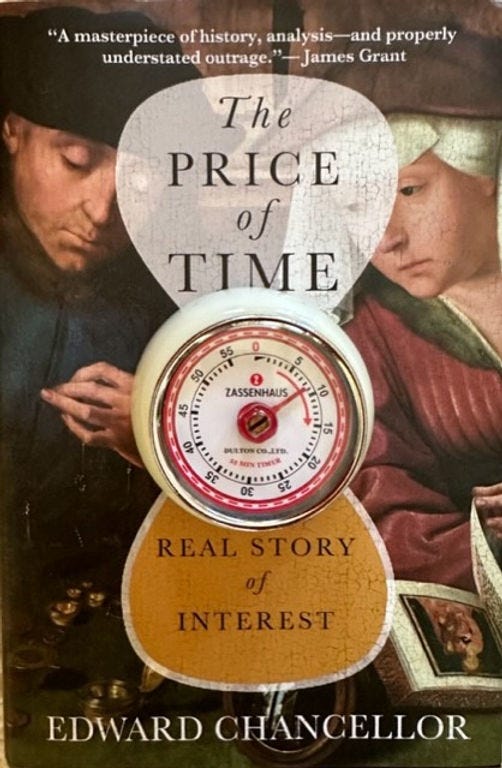Review of THE PRICE OF TIME
making interest rates metaphysical and necessary ...
Certainly, the title of this book would suggest it is not for everyone. It is and it isn’t. The book is divided into three parts. The first part entitled “Of Historical Interest” should be taught in high school and should serve as a lovely introductory piece to any degree in economics or business. The second and largest part addresses the 30+ year bond market begun in the mid-Eighties and coming to an end only in the last two years. It saw steadily declining rates over all terms, the rise and fall of negative rates and massive central bank management of our monetary world. By the third part, Chancellor’s strong editorial slant that had become quite evident in part two is fully revealed. The compelling history book shifts into a convincing account of contemporary economic currents and then ends as an intelligent but redundant polemic.
I wish Chancellor had put more time into his deft historical treatment. THE FIRST PART IS WORTH BUYING THE BOOK. It is utterly absorbing and often a bit mind-blowing. Interest is old, always controversial and as the title suggests, utterly metaphysical. Combined with his lovely use of time as an asset are the stories of one bubble after another. One can easily make the case that the recorded history of man is one continuous bubble cycle contained now within the greatest bubble we have ever made – climate change. This kind of thinking makes the first eighty pages a very relevant and oddly comforting read.
The second part is the stuff of a series of high-end articles as he unpacks the monetary history of pre-2008, 2008 itself and the consequences. Bubbles are everywhere, as are the aggressive actions of the central banks, in particular our Fed. His central thesis in this section (and less obviously in the first part) is that LOW interest rates over an extended periods of time create bubbles and financial collapse. He takes the historically low rates of the last few decades, the massive amount of money chasing return of all sorts, the creation of cryptos and other such gimmicks as evidence of future disaster. It is convincing and I agree with much of it but in the end, I wearied as he “doth protest too much”.
My honest and very subjective critique may have dissuaded you from reading the book. I suggest you find it in your independent bookstore, grab a chair or a stair and read the first chapter (not the Introduction). That may be enough … or not.
The Price of Time
The Real Story of Interest Rates
Edward Chancellor
2023 310 pages


